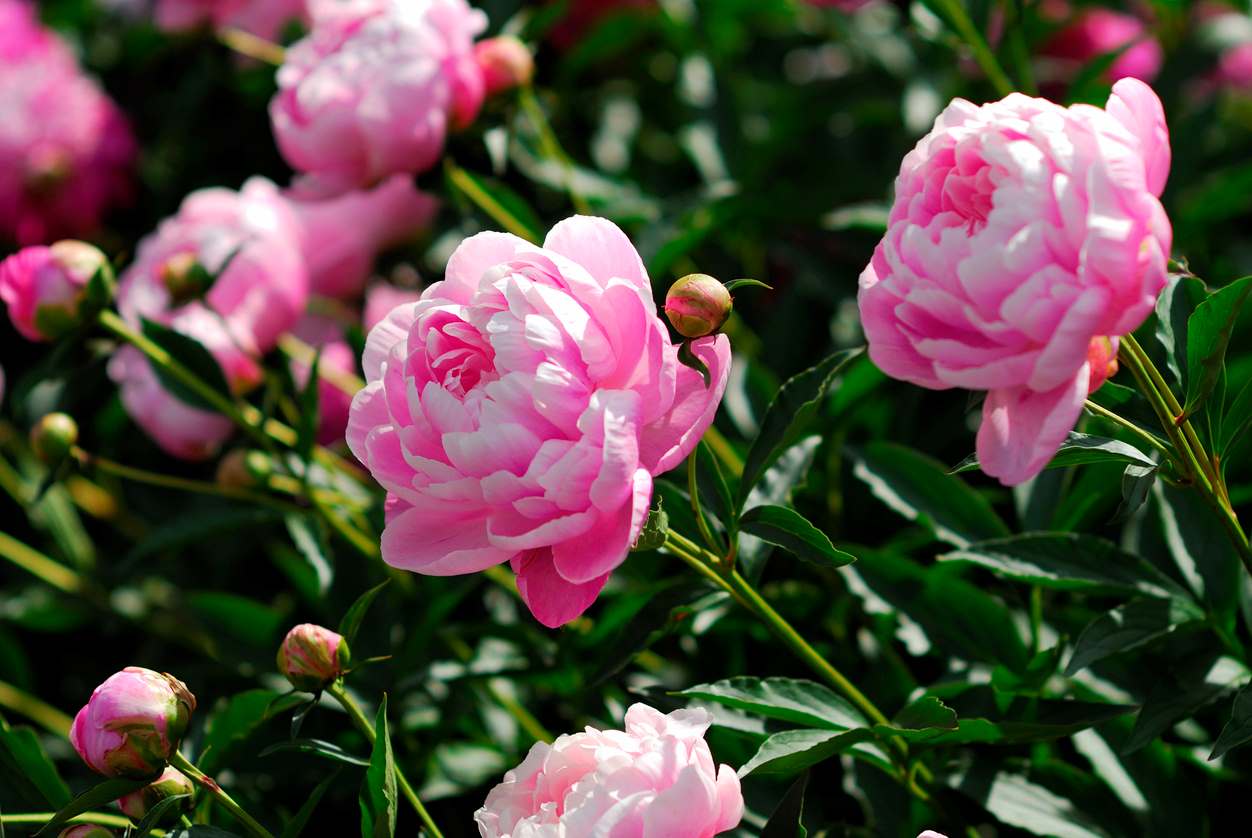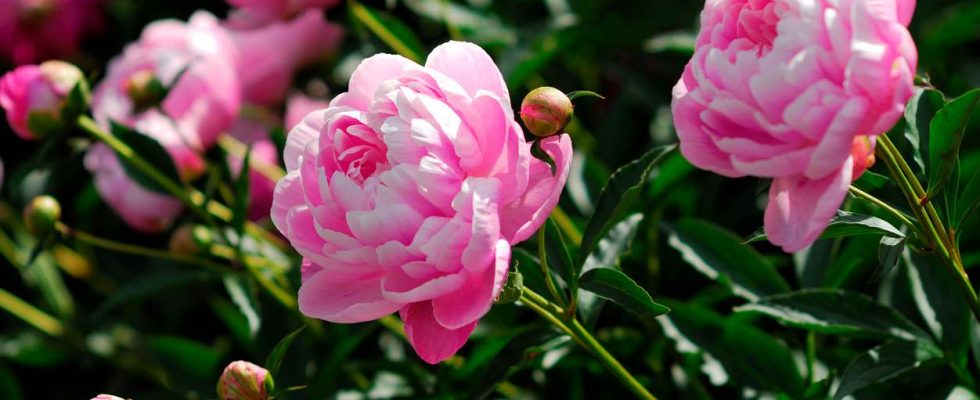
Planting at the right depth
- If you plant a peony in a containerbe sure to match the level of the potting soil to that of the ground.
- Same if you replant a peony moved or divided with a nice mound of earth.
- For a peony purchased with bare rootsthe main buds must be located just below the surface of the soil: too deep or too superficial and flowering will not take place for several years, the time for the stump to return to the correct depth.
- Water abundantlybut without drowning it.
- During the first two summers, do not let the foliage wilt. This will have less impact later when the plants are well established.
Discreet staking for your peonies
- As soon as the young shoots emerge from the ground, place very forked branches (birch, hazel, etc.) around the plant, so as to support the stems that are too weak to carry the double flowers.
- We also find in the trade hoops tutors which is raised as the plants grow.
- A good technique is also to remove the weakest and non-flowering stems as soon as you spot them (when the spots start to show). The flower stems are thus strengthened by this selection.
A minimum amount of care for your peonies is essential
- As soon as the flowers fade, cut them off to prevent them from depleting the plant, but above all, to limit the risk of mold appearing if the weather is humid.
- Petals that fall and mold on the foliage also cause the appearance of diseases.
- Established peonies do not need to be watered in summer, because they are then dormant and no longer grow.
- If it is very dry, they may lose their foliage, but this does not affect the vigor of the plant or the next flowering.
- Compensate by spreading decomposed manure or compost around the stumps from September: the nutrients will benefit the roots, which are active as soon as the soil becomes moist again.
Divide little and not often
Peonies mainly multiply by stump division, which is preferably carried out in September.
How to do ?
- Slice the mother stump like it was a cake, with a sharp spade.
- Shorten the deep roots by cutting them cleanly using pruning shears (do not tear them out), so that they produce a large quantity of new rootlets, valuable for a good recovery of the plant.
- Sprinkle the cut wound with charcoal, not forgetting the mother plant.
- Do not take more than a third of the plant to avoid depleting it, at the risk of losing one or two years of flowering.
Protection of peonies from diseases and pests
Although resistant, peonies are not immune fungal diseases and pest attacks. To preserve the health of your plants, adopt preventive practices.
- Inspect the foliage regularly for signs of disease or insect damage.
- In the event of fungal diseases, such as gray rot, immediately remove the affected parts and apply a suitable fungicide treatment.
- To combat parasites such as aphids, favor organic solutions, such as the introduction of their natural predators or the application of insecticidal soap.
The importance of crop rotation
Crop rotation is a beneficial agricultural practice that involves changing the type of plants grown in a specific area of the garden from one year to the next. This technique prevents the depletion of soil nutrients and reduces the risk of accumulation of pests and diseases specific to certain plants.
Although peonies are perennial plants that remain in place for many years, it is advisable not to replant them immediately in the same location after dividing or moving.
If possible, introduce a rotation with other plants to allow the soil to regenerate and reduce pest pressure.

